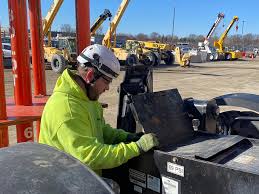
WISCONSIN — Apprenticeship programs in Wisconsin are thriving, with the state hitting an all-time high for registered apprentices in 2024, according to the latest report from the Wisconsin Policy Forum. Using data from the state’s Department of Workforce Development, the report highlights both progress and persistent gaps in who’s benefitting from these training pathways.

Data shows a record 17,509 Wisconsinites took part in the state’s Registered Apprenticeship Program last year — an impressive 77% jump since 2013. The surge comes as Wisconsin, like much of the nation, grapples with labor shortages across industries such as construction, healthcare, education, and agriculture.
Apprenticeships, which combine paid, hands-on work with classroom learning, remain a proven path for filling critical skill gaps and helping residents step into good-paying jobs without a traditional four-year degree.
Compared with other states, Wisconsin stands out for its robust embrace of the model. As of January 2025, the state ranks 11th nationally for the number of active apprentices per capita, with 2.4 apprentices for every 1,000 residents. That’s well above the national median of 1.7. Last year’s rate was even higher, hitting 3.0 active apprentices per 1,000 people — trailing only a few states such as Hawaii, which topped the list at 4.2.
Construction trades continue to dominate Wisconsin’s apprenticeship landscape. In 2024, at least two-thirds of all apprentices worked in construction. Among those, electricians led the pack with 3,172 apprentices, followed by plumbers with 2,167. In 62 of the state’s 72 counties, construction remains the top field for apprenticeships — a clear sign that building trades are the backbone of Wisconsin’s training pipeline.
Manufacturing followed as the next largest sector for apprenticeships, while smaller numbers of apprentices entered fields like healthcare and utilities.
The state’s youth apprenticeship pipeline is growing fast, too. According to the report, youth apprenticeships have more than tripled, jumping from 3,035 in 2016 to 11,357 by early 2025. Since 2019 alone, those numbers more than doubled, with healthcare topping the list of fields pursued by high school students.
“This reflects strong growth in that sector and widespread interest among high school students in pursuing careers in healthcare,” the report notes. In contrast, youth apprenticeships in manufacturing and construction remain relatively lower, with only about 13% and 12% of participants, respectively.
Despite the record overall numbers, the report spotlights gaps in who’s accessing these opportunities. The share of Hispanic apprentices has doubled over the past decade, reaching 8.1% in 2024, but Black and female representation fell during the same period. Black workers made up only 4.5% of apprentices in 2024, down from 6.8% in 2012. Female participation dropped from 11% in 2013 to just 7.6% last year — highlighting the need for more inclusive outreach and retention strategies.

Geographic disparities persist as well. While Dane, Outagamie, and Waukesha counties lead in total apprentice numbers, some smaller counties like Outagamie and Sauk show higher concentrations per capita — 7.9 apprentices for every 1,000 residents, well above the state average.
Another piece of Wisconsin’s workforce puzzle is the state’s pre-apprenticeship system. These programs help people explore trades and gain basic skills before moving into a formal apprenticeship. Between 2023 and 2024, 2,029 people enrolled in pre-apprenticeship programs, mostly in construction. However, access remains uneven, with Milwaukee and Dane counties hosting most of the programs.
“The state has certified pre-apprenticeship programs since 2017, but few if any such programs exist in most of the state, and the role they play is not widely understood outside of the counties where they are currently available,” the Wisconsin Policy Forum report states.
Organizations like WRTP | BIG STEP, the state’s largest pre-apprenticeship provider, say demand is strong — but many participants have to commute to Milwaukee, Madison, or Racine because similar training isn’t offered in their own communities.
Workforce experts say expanding access to these programs statewide could help bridge workforce gaps in construction and other industries desperate for talent.
As Wisconsin Policy Forum officials put it, “Efforts should be made overall to try and maximize tools across apprenticeships to continue their growth.”
With workforce shortages pressing in every corner of the state, leaders say continuing to build on Wisconsin’s apprenticeship success story could pay dividends for years to come.
Originally reported by Rachel Ryan in Spectrum News 1.